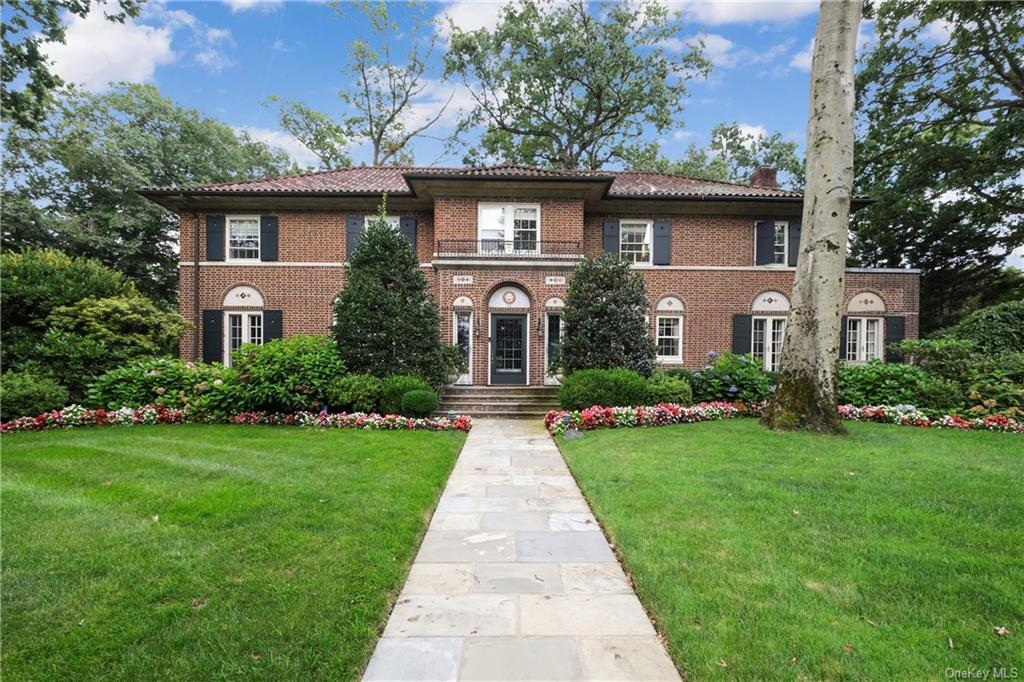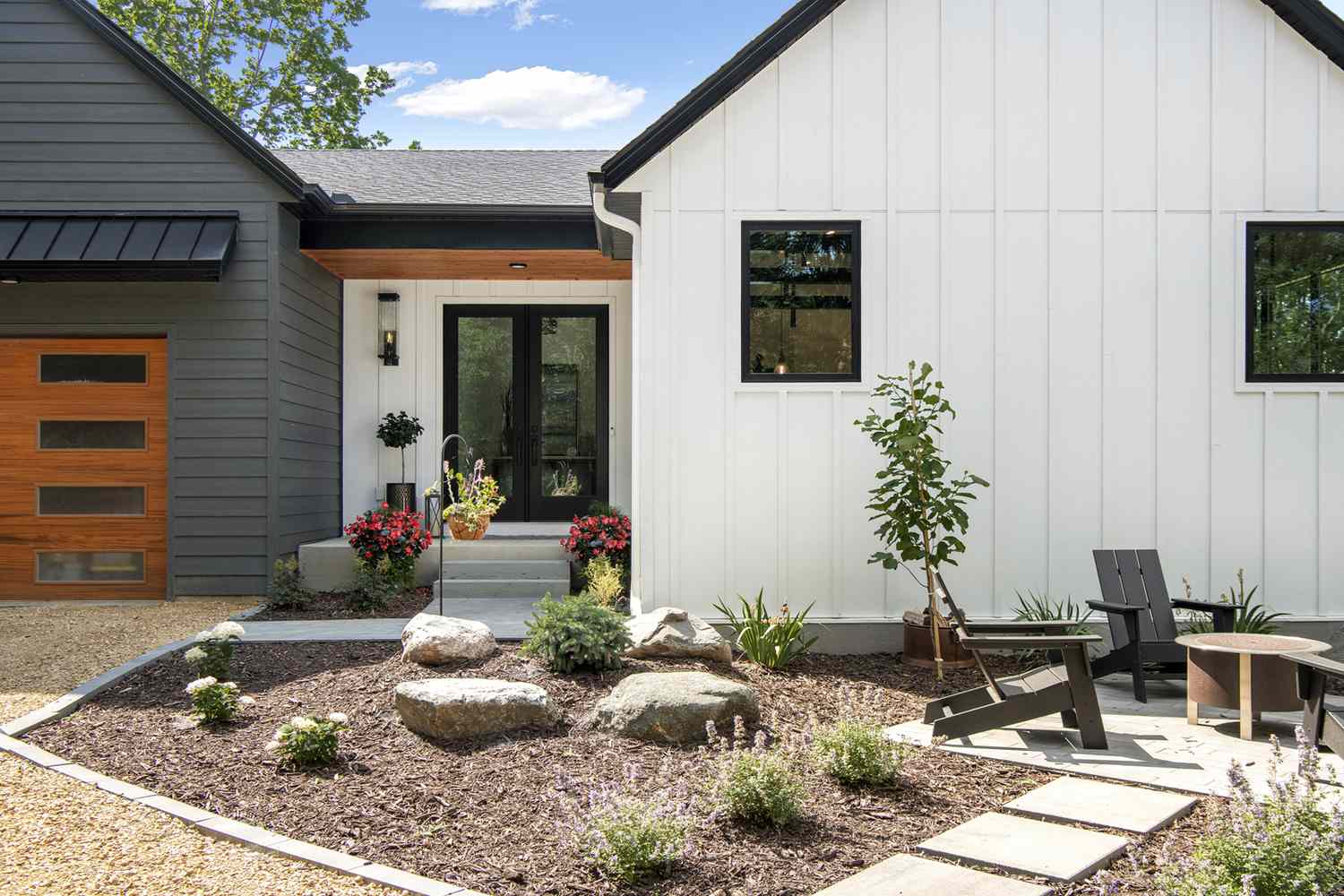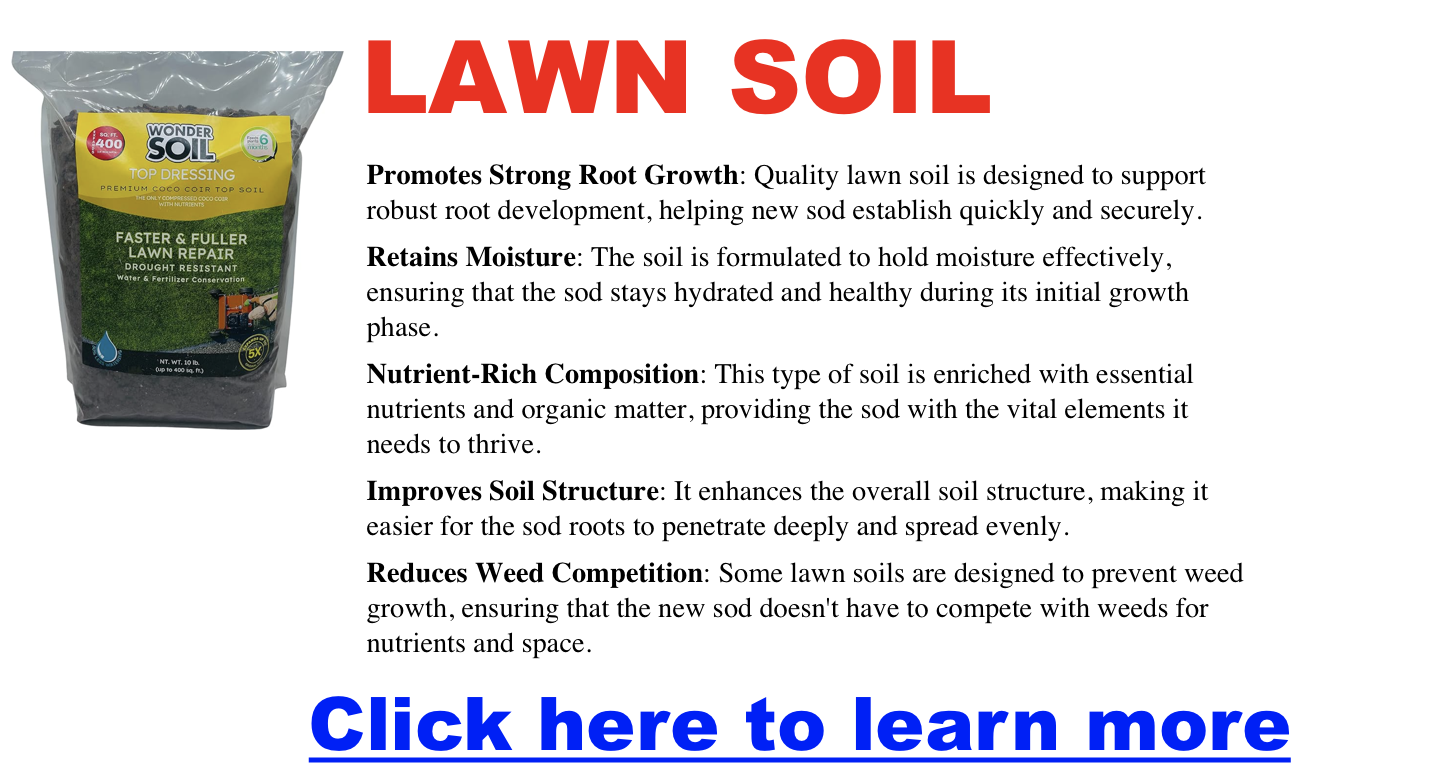Matt
Cheap simple front yard landscaping ideas
Let’s be honest: we all want a beautiful front yard. But the thought of expensive plants and complicated projects can be enough to make you retreat back indoors. Fear not—a stunning front yard doesn’t have to cost a fortune or require a landscaping degree! Here are some simple and budget-friendly ideas to transform your space.

Simple yard landscaping ideas
Click here for landscaping ideas without hiring costly designers
Sometimes, the biggest transformations come from the smallest details.
- Edging is everything: Define your flower beds or create a winding path with bricks, stones, or inexpensive plastic landscaping. This simple step instantly gives your yard a polished look and helps prevent unwanted grass and weeds from creeping into your flower beds.
- Mulch magic: A layer of mulch does wonders for your yard. It suppresses weeds, moistens your soil, and adds a bright color. Look around to see if your community offers free mulch programs, or consider buying in bulk for extra savings. When choosing mulch, pick a color that compliments your house and the plants you plan to feature. Classic brown or black mulch is always a safe choice, but don’t be afraid to experiment with colored mulch in moderation for a more playful touch.
- Plant smart: You don’t have to buy a truckload of plants. Choose a few statement pieces – think colorful perennials that flower throughout the season. These low-maintenance shrubs add structure or native plants that thrive in your area and attract pollinators like butterflies and bees.
Softscaping for Small Spaces
- Embrace Native Plants: Opt for native grasses, drought-tolerant plants, and low-growing ground cover. These beauties require minimal maintenance and thrive in your local climate.
- Plant native grasses
- Plant drought-tolerant plants
- Plant low-growing groundcover
- Plant shade-loving plants under trees
- Use native plants for easy care.
- Colorful Accents:
- Create a container garden
- Plant colorful annuals in borders
- Plant a small flowering tree
- Create a small herb garden
- Use hanging baskets for color
- Plant a dwarf fruit tree
- Plant fragrant flowers near the entrance
- Install window boxes
- Vertical Gardening: Maximize your space with trellises, hanging baskets, or window boxes, adding dimension and visual interest.
- Install a simple trellis
- Use vertical gardening techniques
- Attract Wildlife: Create a haven for butterflies with a dedicated garden or plant fragrant flowers to entice pollinators. Consider adding a bird bath to welcome feathered friends as well.
- Create a butterfly garden
- Install a bird bath
- Shady Solutions: Utilize shade-loving plants under trees to create a lush, layered look.
- Textured Accents: Incorporate ornamental grasses for movement and visual interest in your landscape.
- Privacy & Greenery: Plant a privacy hedge or add evergreens for year-round color and seclusion
Hardscaping for Curb Appeal
- Define and Divide: Use edging pavers, decorative edging, or even simple rocks to create clean lines and define different areas in your yard.
- Edge pavers with grass
- Paths and Walkways: Create a charming stepping stone path or use pea gravel for a low-maintenance and textured ground cover
- Use pea gravel for low-maintenance ground cover
- Create a stepping stone path
- Focal Points: Draw the eye with a small landscaped fountain, a mature tree, or a unique garden statue
- Add a small landscaped fountain
- Use mature trees as focal points
- Install a decorative mailbox
- Use decorative rocks as accents
- Create a focal point with a garden statue
- Use decorative planters for instant impact
- Upcycled Charm: Repurpose materials for planters or incorporate decorative rocks to add personality and reduce waste.
- Mailbox Makeover: Upgrade your mailbox to a decorative one for an instant curb appeal boost
- Fencing & Edging: Add structure and visual appeal with decorative fencing or edging for flower beds.
- Use decorative edging for flower beds
- Use decorative fencing

Low-Effort, High-Impact Additions
- Container Gardens: Enjoy the flexibility of container gardens to showcase colorful annuals or even a dwarf fruit tree
- Rock Gardens and Succulents: Embrace the low-maintenance beauty of rock gardens and succulents, ideal for small, sunny spaces.
- Create a rock garden
- Create a succulent garden
- Mulch and Weed Control: Apply mulch to suppress weeds and retain moisture in your soil
- Use mulch for weed control
- Landscape Lighting: Illuminate your front yard with solar-powered landscape lights for ambiance and safety
- Install landscape lighting
- Use solar-powered landscape lights
- Water Features: Add tranquility and attract wildlife with a small water feature or rain garden. Consider a small pond or a rain barrel system for sustainable irrigation
- Install a small water feature
- Create a rain garden
- Install a small pond
- Create a small rain barrel system for irrigation
More Inspiring Ideas
- Focus on sculpted shrubs to add a touch of elegance
- Create a small seating area for relaxation and enjoyment
- Design a small zen garden for peaceful contemplation
- Plant a wildflower meadow for a burst of natural beauty
- Install a small pergola for shade and a touch of romance
- Start a small vegetable garden for fresh produce
- Plant low-maintenance perennials for year after year beauty
- Provide shade and energy savings with a strategically placed shade tree
- Craft a gravel garden for a modern and minimalist look
DIY Projects with Major Wow-Factor
Ready to unleash your inner DIY superstar? These projects are fun and will seriously impress your neighbors:
- Step it up: Create a charming walkway with stepping stones or affordable pavers. Get creative with placement and add pebbles or low-growing plants between the stones.
- Rock your entrance: Paint your house numbers on a large, interesting rock and place it prominently in your front yard.
- Light it up: String lights add a touch of magic to your front yard. Hang them over a patio area, drape them around a tree, or weave them through a climbing vine.
- Let there be art: Turn an old rake or shovel into a beautiful garden feature. Paint it a cheerful color and hang it on your fence or shed.
- Mailbox makeover: Give your mailbox a fresh coat of paint and some decorative hardware. Add a hanging planter or window box for a pop of color.
- Welcome mat magic: A colorful and inviting welcome mat sets the tone for your front yard.
- Think vertical: Hanging planters are a great way to add plants and visual interest to a small space. Place them on your porch, fence, or even a shepherd’s crook.
- Shutter chic: If you have old shutters, put them to good use! Lean them against the house or fence and decorate them with planters or hanging baskets.
- Crafty containers: Repurpose old tin cans, buckets, or boots as unique and quirky planters.
- Pinecone paradise: Gather some pinecones and spray paint them in metallic colors for festive and affordable front yard decoration.
Low-Maintenance = Long-Term Savings
Think ahead to save time and money in the long run.
- Ground covers to the rescue: Plant low-maintenance groundcovers like creeping thyme or sedum to fill spaces and crowd out weeds.
- Hardscaping heroes: Incorporate gravel, crushed stone, or river rocks to create beautiful, low-upkeep pathways, patios, or garden features.
- Love the drought? Choose drought-tolerant plants suited to your climate. You’ll save on water bills and have plants that naturally thrive with minimal fuss.
Resources & Inspiration
- Tap into your community: Check for local resources like community gardens that offer free plants or cuttings or online marketplaces where you can find free or discounted landscaping materials.
- Get those creative juices flowing: Websites like Pinterest are packed with budget-friendly front yard landscaping ideas. Let those images spark your imagination!
The Takeaway
A stunning front yard isn’t about spending a fortune; it’s about clever choices and creativity. Start with one or two of these projects and see how your space transforms. Remember, you can always add more over time!
Mushrooms Growing on Your Lawn? Here’s What’s Going On
Mushrooms might look strange, but they’re actually a sign that your soil is doing its job. Mushrooms are the above-ground fruiting part of a fungus—think of them like apples on a tree. The rest of the fungus lives in the soil, where it breaks down organic matter like old roots, leaves, or even grass clippings. All this decaying material makes for a feast for fungi!
Are They a Problem?
The good news is that the vast majority of mushrooms popping up in your lawn are harmless to both your grass and your pets. They might be a bit of an eyesore, but they’re also an indicator of healthy, active soil.
Getting Rid of Mushrooms
- Temporary fix: If you simply don’t like the look of them, knocking them over or raking them up will do the trick. They usually disappear on their own as the weather dries out.
- Longer-term management: To reduce mushroom appearances in the long term, focus on creating a less favorable environment for fungi. Here’s how:
- Watering: Mushrooms thrive in moist environments. Adjust your watering habits to avoid creating constantly soggy soil. This encourages deeper root growth in your grass and discourages fungal growth near the surface.
- Aeration: Compacted soil can trap moisture and create ideal conditions for mushrooms. Aeration ican improve drainage and air circulation. This allows excess moisture to escape and makes the environment less hospitable for fungi.
- Dethatching: A thick thatch layer, a buildup of dead grass stems and clippings at the base of grass plants, can trap moisture near the soil surface. This creates a prime breeding ground for mushrooms. Dethatching your lawn removes this layer, improving air circulation and reducing moisture buildup.
What about Poisonous Mushrooms?
While most lawn mushrooms are harmless, accurately identifying mushroom types can be tricky. If you have young children or pets who might put things in their mouths, it’s safest to err on caution and remove any mushrooms you see. If you’re seriously concerned, contact your local university extension service or a mycologist (mushroom expert) for help with identification.
How to revive dead grass fast
A dead, brown lawn is a major eyesore and a source of frustration. You want that lush green carpet back, and you want it fast! While there’s no magic wand to restore a dead lawn instantly (unless you call a professional to come and rip it apart and drop sod in), the good news is that you can often revive it with the right steps. The key to getting the fastest results is figuring out what happened to your grass.
Is Your Grass Really Dead?
Before you panic, take a closer look. Brown grass doesn’t always mean it’s completely gone. Some grass types go dormant during drought or extreme heat, turning brown to conserve energy. A quick “tug test” will tell you the truth – gently tug on a handful of brown grass. If the blades break off easily, it’s likely dead. If they hold on, there’s still hope! Dormant grass often greens right back up with regular watering.
It’s Not Magic, But It Can Be Fast
Click here for landscaping ideas without hiring costly designers
Reviving a dead lawn takes a little time and effort. However, you can see significant improvement quite quickly by figuring out why your grass died and taking the right steps. Here’s a timeline to set your expectations:
- Weeks 1-2: Once you address the underlying cause (like adding water in a drought or aerating compacted soil), you should start to see signs of recovery, especially in minor damage situations. New grass seeds will begin to germinate during this time.
- Months 1-3: With continued care (watering, mowing at the right height), your lawn should be well on its way to recovery. Overseeded areas will be filling in, and overall greenness will be improving.
- Beyond 3 Months: With proper maintenance, your lawn should be fully revived and thriving by the end of the growing season.
What to Do If Your Grass is Dead
If your grass failed the tug test, don’t despair. Here’s what you need to do based on how severe the damage is:
- Minor Damage: If you have patches of dead grass or an overall thinning lawn, overseeding is your friend. This involves spreading new grass seed over the damaged areas while also providing a boost with fertilizer to give your existing grass some extra love.
- Significant Damage: When larger areas are affected, look deeper. Soil compaction can suffocate roots. Aerating your lawn will help. A heavy thatch layer can also block water and nutrients – dethatching can make a big difference. If insects or diseases are the culprits, you’ll need targeted treatments.
- Widespread Death: In cases of extreme damage, sometimes starting fresh is the most practical (though not necessarily the fastest) solution. Reseeding a large area or laying new sod can give you the fresh green lawn you crave.



